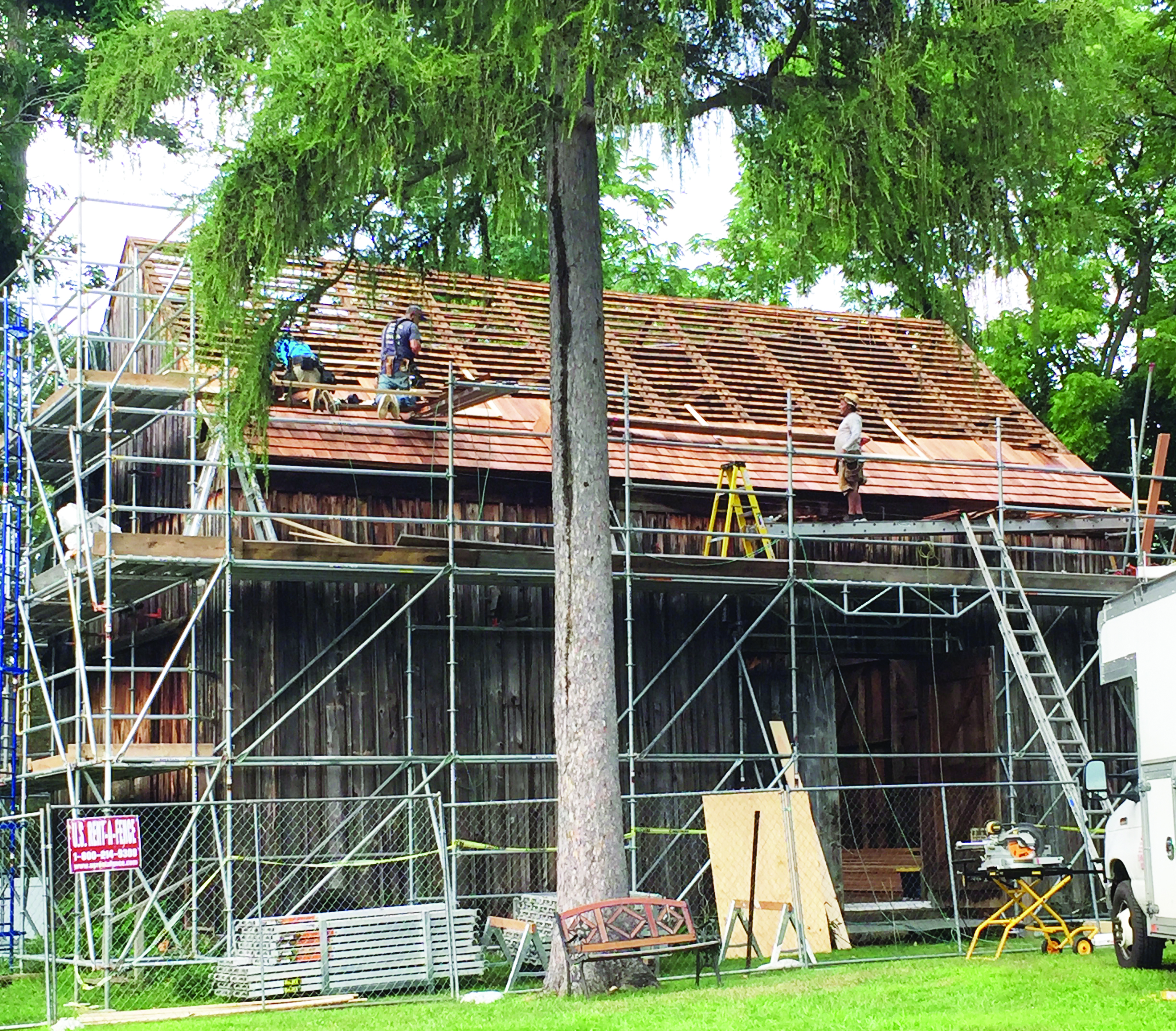The Dutch-American barn that sits behind Port Washington’s Sands-Willets House is getting a facelift in order to serve a new purpose for the Cow Neck Peninsula Historical Society: to serve as an exhibit.
The restoration work being conducted by the society includes the removal of the Sands Barn’s roof, which will be replaced with 24-inch cedar shingles, replacing portions of the siding and new doors which will be constructed as they were in 1690, said Fred Blumlein, barn project manager and trustee of the Cow Neck Peninsula Historical Society.
The doors will be reproduced by an ironmonger in Massachusetts, he said.
The most modern addition to the barn will be a new ramp that will allow access by the disabled to the coming exhibit.
Chris Bain, president of the historical society, said the exhibit will feature the society’s collection of agricultural tools and its rolling surrey, horse-drawn sleighs and other large items that the public has rarely seen.
Blumlein said the exhibit will represent the lives of the people who worked in the barn over the centuries. The use of the society’s tools will help complete the visualization of how the work was done.
He said the exhibit aims to connect the stories of people to a tangible object, one of the most important achievements in museum exhibitions.
Blumlein said Port Washington’s Dutch-American-style barn is only one of three left on Long Island. Five “H-Frames,” an identifying characteristic of a Dutch barn, run through the center of the structure from one gabled end to the other. The frames are formed by massive anchor posts and beams.
The “H-frame” is an innovation by the Dutch settlers to construct a barn fairly quickly in order to store food and grain so as to not starve through the winter, Blumlein said.
The barn is believed to have been built by the Cornwells, one of the first families to settle in Port Washington, on the property that was later purchased by the Sands family, the namesake of the Village of Sands Point.
The barn remained standing on the property on one of the last working farms in Sands Point into the 1970s until the owner sold the property and donated the barn to the Cow Neck Peninsula Historical Society in 1977.
It was then disassembled and moved to where it currently stands at the Sands-Willets House, another former property of the Sands family.
“The Sands Barn is an architectural treasure that portrays the large-scale building techniques of New York’s early Dutch settlers,” said Blumlein. “Through the 18th and 19th centuries, it was adapted to meet the needs of succeeding generations of farmers on the Port Washington peninsula.”
Blumlein said the barn restoration began in late June and should be finished by mid-September in time for the Cow Neck Peninsula Historical Society’s annual Country Fair on Sept. 21.



